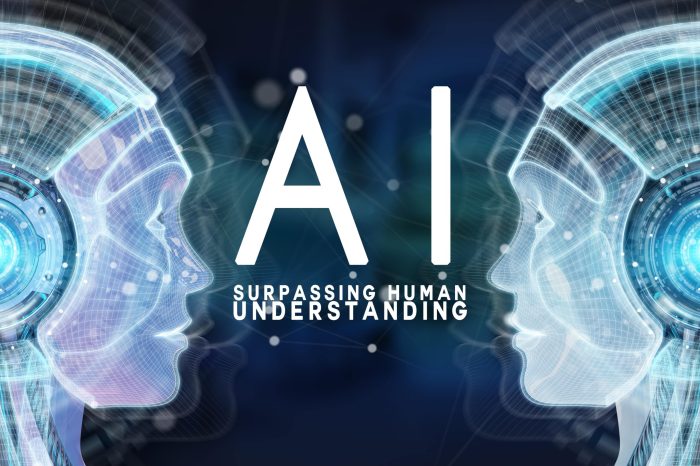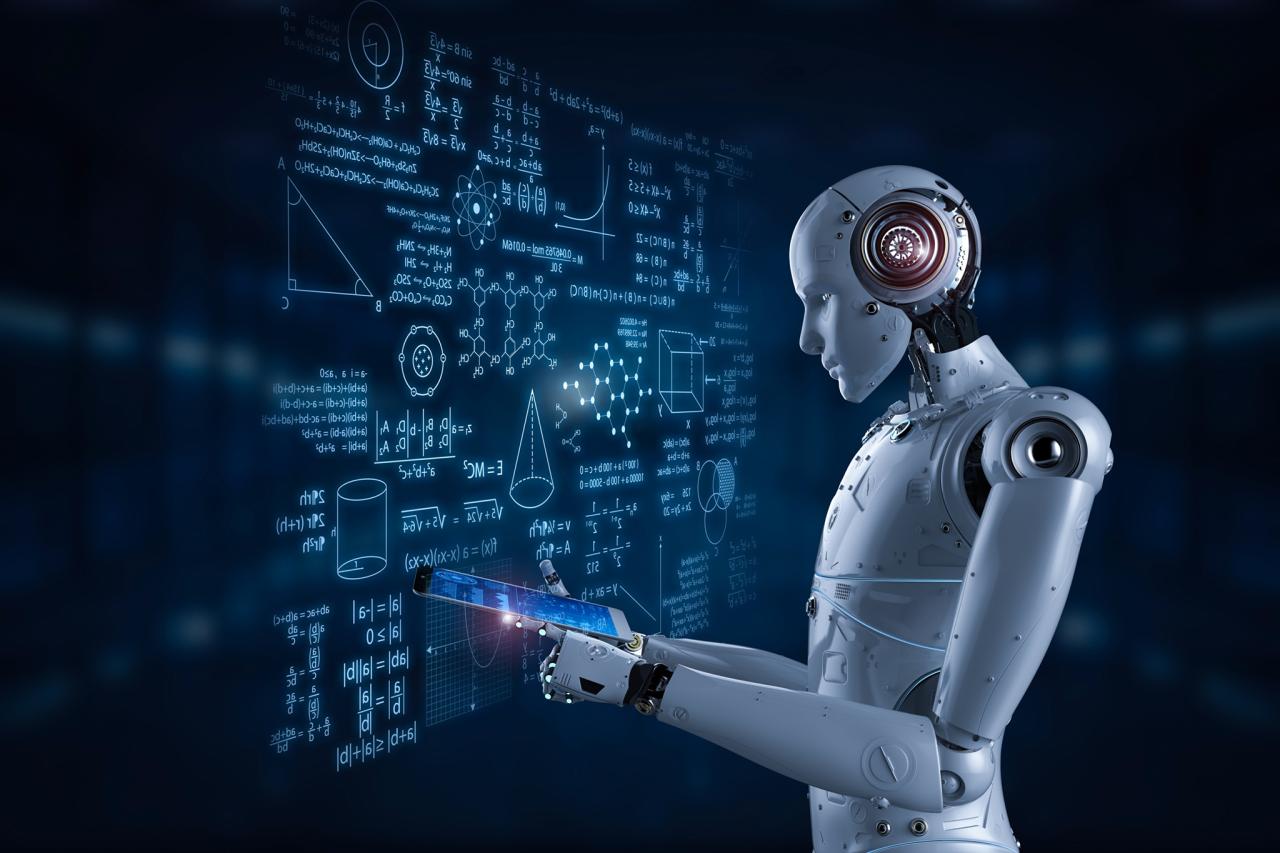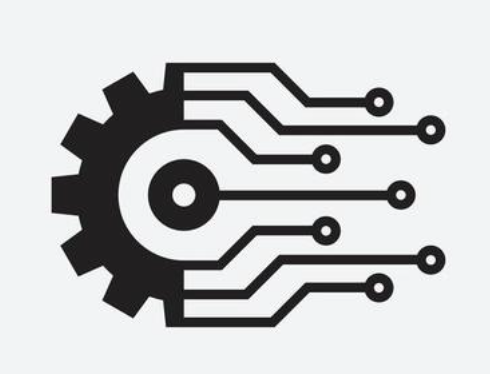Artificial Intelligence (AI) is no longer a futuristic concept, but a rapidly evolving reality that is transforming every aspect of our lives. From personalized recommendations on streaming services to self-driving cars, AI is already deeply integrated into our daily routines.
This transformative technology has the potential to revolutionize industries, solve complex problems, and create new opportunities.
AI encompasses a wide range of technologies, including machine learning, deep learning, and natural language processing. These technologies enable computers to learn from data, make predictions, and even understand and generate human language. The possibilities of AI are vast, and its impact on our world is only beginning to be felt.
Introduction to Artificial Intelligence

Artificial intelligence (AI) is a rapidly evolving field that encompasses the development of computer systems capable of performing tasks that typically require human intelligence. AI systems are designed to learn, reason, and solve problems, mimicking cognitive abilities like perception, language understanding, and decision-making.The core concepts of AI revolve around the idea of creating intelligent agents that can interact with their environment and achieve specific goals.
These agents are built upon algorithms and data structures that enable them to process information, learn from experience, and make informed decisions.
History of AI
The history of AI can be traced back to the mid-20th century, with early pioneers like Alan Turing and John McCarthy laying the foundation for the field. Turing’s seminal work on the Turing test, which proposes a way to assess a machine’s ability to exhibit intelligent behavior, remains influential in AI research.
McCarthy coined the term “artificial intelligence” in 1955, during the Dartmouth Summer Research Project on Artificial Intelligence, which is widely considered the birthplace of the field.Early AI research focused on developing systems that could solve specific problems, such as playing chess or proving mathematical theorems.
The field experienced periods of rapid progress and subsequent setbacks, known as “AI winters,” as researchers struggled to overcome limitations in computing power and the complexity of human intelligence.However, the late 20th and early 21st centuries witnessed a resurgence in AI research and development, driven by advancements in computing power, data availability, and algorithmic breakthroughs.
This period has seen the emergence of powerful AI techniques, including machine learning, deep learning, and natural language processing, leading to significant progress in areas such as image recognition, speech synthesis, and autonomous driving.
Types of AI
There are different ways to categorize AI systems, with one common classification scheme distinguishing between narrow, general, and superintelligence.
Narrow AI
Narrow AI, also known as weak AI, is designed to perform specific tasks within a limited domain. Examples of narrow AI include:
- Image recognition software used in facial recognition systems
- Spam filters that identify and block unwanted emails
- Virtual assistants like Siri and Alexa that respond to voice commands
General AI
General AI, also known as strong AI, refers to systems that possess the ability to understand and reason like humans across a wide range of tasks. General AI systems are not yet a reality, but researchers are actively pursuing this goal.
Superintelligence
Superintelligence, also known as artificial superintelligence (ASI), refers to AI systems that surpass human intelligence in all aspects. This hypothetical level of AI is a subject of ongoing debate and speculation, with some experts arguing that it poses potential risks to humanity.
Applications of AI
Artificial intelligence (AI) is rapidly transforming various industries, offering innovative solutions and enhancing existing processes. From healthcare to finance, transportation to education, AI is making a significant impact, driving efficiency, improving decision-making, and creating new possibilities. This section explores the diverse applications of AI across different sectors, highlighting specific examples, ethical considerations, and potential societal implications.
Healthcare, Artificial Intelligence
AI is revolutionizing healthcare by improving diagnosis, treatment, and patient care.
- AI-powered diagnostic toolscan analyze medical images, such as X-rays and MRIs, to detect abnormalities and assist doctors in making accurate diagnoses. For example, Google’s AI-powered tool, “DeepMind Health,” has shown promising results in detecting breast cancer in mammograms. This technology can significantly reduce the time and effort required for diagnosis, enabling earlier detection and intervention.
- AI-driven drug discoveryaccelerates the development of new medications by analyzing vast amounts of data to identify potential drug targets and optimize drug formulations. For instance, AI algorithms have been used to discover new antibiotics, potentially addressing the growing threat of antibiotic resistance.
- Personalized medicineuses AI to tailor treatment plans based on individual patient characteristics, such as genetics, lifestyle, and medical history. AI-powered systems can predict treatment outcomes and optimize drug dosages for better efficacy and reduced side effects.
Ethical considerations include data privacy, algorithmic bias, and the potential for job displacement in the healthcare industry. However, AI also holds immense potential to improve access to healthcare, reduce costs, and enhance patient outcomes.
Finance
AI is transforming the financial industry by automating tasks, improving fraud detection, and personalizing financial services.
- AI-powered chatbotsprovide 24/7 customer support, answering inquiries and resolving issues efficiently. Chatbots can also personalize financial advice and recommendations based on individual customer needs.
- Fraud detection systemsuse AI to analyze transactions and identify suspicious patterns, preventing financial losses and protecting customers. AI algorithms can detect anomalies in spending habits, unusual account activity, and other red flags that may indicate fraudulent activity.
- Robo-advisorsuse AI to provide automated investment advice, managing portfolios based on individual risk tolerance and financial goals. These AI-powered systems can offer personalized investment strategies at a lower cost compared to traditional financial advisors.
Ethical considerations in finance include the potential for algorithmic bias, the need for transparency in AI decision-making, and the impact on financial stability in the event of AI system failures. However, AI’s potential to improve efficiency, reduce costs, and enhance financial security remains significant.
Transportation
AI is revolutionizing transportation with autonomous vehicles, traffic management systems, and optimized logistics.
- Self-driving carsare powered by AI algorithms that perceive their surroundings, make decisions, and navigate roads autonomously. This technology has the potential to reduce accidents, improve traffic flow, and provide mobility for people who are unable to drive.
- AI-powered traffic management systemsoptimize traffic flow by analyzing real-time data on road conditions, congestion levels, and weather patterns. These systems can adjust traffic signals, recommend alternative routes, and improve overall efficiency.
- AI-driven logisticsoptimizes delivery routes, manages inventory, and automates warehouse operations, improving efficiency and reducing costs. AI algorithms can analyze historical data, real-time traffic conditions, and customer demand to create optimal delivery schedules and optimize resource allocation.
Ethical considerations in transportation include the safety of autonomous vehicles, the potential for job displacement in the transportation industry, and the impact on urban planning and infrastructure. However, AI’s potential to improve safety, reduce congestion, and enhance mobility remains substantial.
Education
AI is transforming education by personalizing learning experiences, providing adaptive tutoring, and automating administrative tasks.
- AI-powered personalized learning platformsadapt to individual student needs and learning styles, providing tailored content and assessments. These platforms can track student progress, identify areas of weakness, and provide personalized recommendations to enhance learning outcomes.
- AI-driven adaptive tutoring systemsprovide individualized support and guidance to students, answering questions, providing explanations, and offering practice exercises. These systems can adjust their approach based on student performance, ensuring that each student receives the appropriate level of support.
- AI-powered grading and assessment toolsautomate the grading process, freeing up teachers’ time for more personalized interactions with students. These tools can also provide valuable insights into student performance, enabling teachers to identify areas of improvement and adjust their teaching strategies accordingly.
Ethical considerations in education include the potential for algorithmic bias, the need for equitable access to AI-powered learning resources, and the importance of maintaining human interaction in the educational process. However, AI’s potential to personalize learning, improve student outcomes, and enhance teaching effectiveness remains significant.
The Future of AI
The field of artificial intelligence is rapidly evolving, and its future holds immense promise. AI research and development are poised to unlock groundbreaking advancements, transforming various aspects of our lives. From revolutionizing industries to addressing societal challenges, AI’s potential impact is vast and multifaceted.
Emerging AI Trends
The future of AI is characterized by the convergence of several emerging trends. These trends are pushing the boundaries of AI capabilities, leading to innovative applications and solutions.
- AI-powered robotics is a rapidly developing field that combines AI with robotics to create machines capable of performing complex tasks with greater autonomy and intelligence. For example, robots equipped with AI can be used in manufacturing, healthcare, and logistics, improving efficiency and safety.
- Quantum computing is a new paradigm of computing that harnesses the principles of quantum mechanics to solve complex problems that are intractable for classical computers. Quantum computers have the potential to accelerate AI research and development, leading to breakthroughs in drug discovery, materials science, and optimization.
- Synthetic biology is an emerging field that combines biology with engineering to design and build new biological systems. AI is playing an increasingly important role in synthetic biology, enabling the development of novel therapies, biomaterials, and sustainable energy sources. For instance, AI algorithms are being used to design new proteins and optimize genetic circuits, leading to advancements in personalized medicine and biomanufacturing.
Wrap-Up: Artificial Intelligence

As AI continues to advance, its influence on our society will only grow. The future holds exciting possibilities, with AI poised to revolutionize healthcare, education, and countless other fields. However, with this power comes responsibility. It is crucial to address the ethical implications of AI and ensure that its development and deployment benefit all of humanity.
By fostering responsible innovation and promoting ethical guidelines, we can harness the transformative potential of AI to create a brighter future for generations to come.
Essential FAQs
What are some real-world examples of AI in action?
AI is used in a variety of ways, including: voice assistants like Siri and Alexa, personalized recommendations on streaming services like Netflix and Spotify, facial recognition systems, self-driving cars, medical diagnosis, and fraud detection.
What are the potential risks of AI?
While AI offers immense potential, it also presents certain risks, including job displacement, algorithmic bias, and the misuse of AI for malicious purposes. It is essential to develop ethical guidelines and regulations to mitigate these risks.
How can I learn more about AI?
There are numerous online resources available for learning about AI, including online courses, tutorials, and articles. You can also explore AI-related books and attend conferences and workshops.
